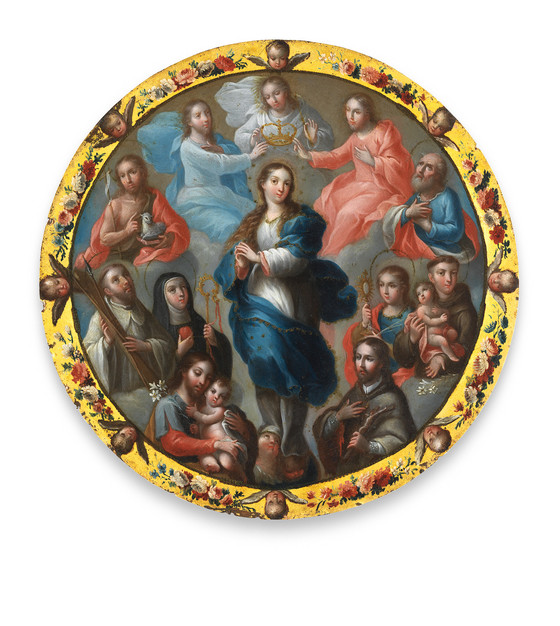Nun’s Badge with the Immaculate Conception and Saints (Medallón de monja con la Inmaculada Concepción y santos)

Please log in to add this item to your gallery.
View comments
No comments have been posted yet.
Add a comment
Please log in to add comments.
Please log in to add tags.
* Nearly 20,000 images of artworks the museum believes to be in the public domain are available to download on this site.
Other images may be protected by copyright and other intellectual property rights.
By using any of these images you agree to LACMA's Terms of Use.
Nun’s Badge with the Immaculate Conception and Saints (Medallón de monja con la Inmaculada Concepción y santos)
Paintings
Oil on copper
Diameter: 7 in. (17.8 cm)
Purchased with funds provided by the Bernard and Edith Lewin Collection of Mexican Art Deaccession Fund (M.2018.177.3)
Not currently on public view


